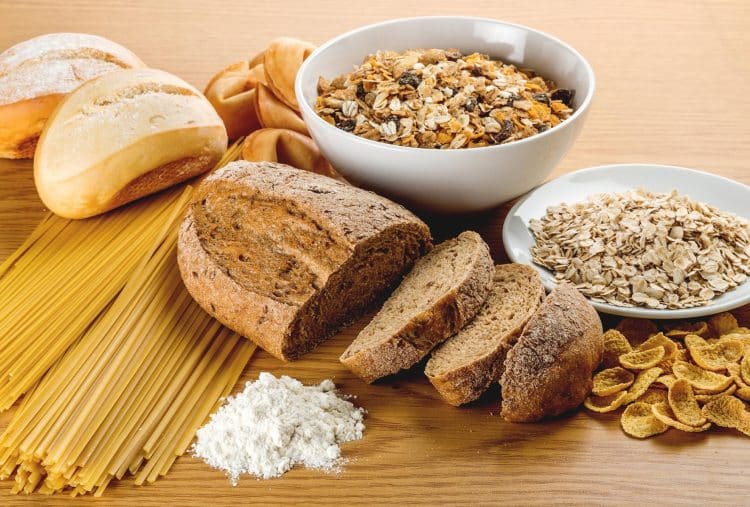It’s generally best to lose weight slowly and steadily. Most experts agree that losing 1-2 pounds per week is optimal. That rate of weight loss is sustainable and not too hard to achieve. You won’t need to starve yourself or exercise to exhaustion.
But, while a slow rate of weight loss is generally best, there may be times when you want to lose weight faster. For example, you may have entered a powerlifting or martial arts contest and need to be a certain weight to compete. Or, perhaps, you have a big school reunion coming up, and you’re desperate to fit into your old high school cheerleading outfit.
It’s usually best to plan for these things well in advance so you don’t have to rush to lose weight. However, life has an annoying way of derailing the best-laid plans, and an event you thought was months away can arrive far sooner than you expected.
In this article, we reveal the four best strategies for losing ten pounds in a week.
The Realities of Losing Ten Pounds in A Week
Before you begin your attempt to lose ten pounds in seven days, make sure you understand the realities of what you are trying to achieve:
Level Up Your Fitness: Join our 💪 strong community in Fitness Volt Newsletter. Get daily inspiration, expert-backed workouts, nutrition tips, the latest in strength sports, and the support you need to reach your goals. Subscribe for free!
A lot of the weight lost won’t be fat
Your body weight is made up of several different components, including muscle tissue, internal organs, bones, skin, fluids, minerals, and fat. When most people talk about weight loss, what they actually want is fat loss.
However, the chances of losing ten pounds of fat in a single week are very low. You’d have to eat next to nothing and exercise for several hours a day to burn the 35,000 calories that ten pounds of fat contain.
So, a large proportion of the ten pounds you lose will be water weight. Water is heavy, and one liter weighs a little over two pounds. Shedding water weight is relatively easy, especially compared to fat loss.
You can and will lose fat in a week, but a significant percentage of your ten-pound weight loss will be water.
You’ll almost certainly regain some of the weight you lost
Losing ten pounds in a week will result in temporary weight loss. Once you return to eating and drinking normally, you’ll regain at least half of what you have lost. It’s very unlikely that you’ll be able to sustain your new weight for more than a day or two.
As such, you should time your efforts so you hit your lowest weight on the day you need to be ten pounds lighter, e.g., the day of your weigh-in if you are cutting weight for a sporting event.
Such rapid weight loss is unsustainable
Just because you can lose ten pounds one week doesn’t mean you’ll be able to lose another ten pounds the next. Such dramatic weight loss is unsustainable. Trying to lose another ten pounds in such quick succession could be dangerous. A slower, more consistent approach to weight loss approach is usually best.
Losing ten pounds in a week could be unhealthy or even dangerous
You’re going to have to exercise and diet hard to lose ten pounds in a week. You’ll also have to manipulate your water levels to reach your ten-pound weight loss goal. Invariably, this will cause dehydration and may even lead to electrolyte imbalances which can affect muscle contractions and even your heart.
Athletes use these strategies all the time to compete within their chosen weight categories, but they also accept there are risks to losing so much weight this quickly.
This is not going to be fun!
Losing ten pounds in a week is going to take effort and determination. You’re going to feel tired, hungry, and possibly unwell. You may not sleep well, and you’ll probably feel moody or anxious.
So, before you begin, ask yourself if the result will be worth it. In all but a few cases, slow and steady weight loss is best.
Four Strategies for Losing Ten Pounds in a Week
While there are no guarantees of success, these are the strategies you need to use to lose ten pounds in a week. The more of them you implement, the more likely you are to reach your weight loss target.
Create a significant daily calorie deficit
While much of the weight you lose over the next seven days will be water, some of it will be fat. That is, providing you eat fewer calories and force your body to burn fat for energy. For every pound of fat you want to lose, you’ll need to burn 3,500 calories more than you consume.
For most people, a 1000-calorie-per-day deficit is realistic and sustainable. This will invariably mean slashing your food intake, but that’s the price you have to pay to lose weight fast.
To determine how many calories you need to consume a day, you need to:
- Estimate your total daily energy expenditure (TDEE) using this calculator.
- Subtract 1000 calories from that number.
- Track your meals and consume that number of calories over the coming week.
Increase your caloric expenditure
Eating less is only part of the weight loss and fat-burning equation. You’ll lose weight faster if you increase your caloric expenditure and create an even more significant calorie deficit.
It doesn’t matter what you do to burn calories, but you should aim to expend an additional 1000 calories per day through exercise and non-exercise physical activity. While this might sound daunting, it probably adds up to an hour of exercise plus a couple of hours of walking, gardening, household chores, and general purposeful movement.
Combined with your 1000-calorie dietary deficit, burning an extra 1000 calories a day should result in losing about four pounds of fat in seven days.
Learn how to burn an extra 1000 calories per day here.
Cut your carb intake to less than 50 grams a day

When you cut carbs from your diet, your body has to use stored muscle glycogen for energy. Glycogen is glucose bound to water molecules. As your body converts the glycogen into glucose, it releases the water, which you then excrete. Eliminating this water from your muscles will lead to rapid weight loss.
How much you’ll lose depends on the size of your glycogen stores. However, low-carb dieters often lose 3-5 pounds within the first week.
However, getting your carb intake to below 50 grams per day won’t be easy, and it means you will have to eliminate many nutritional staples from your diet.
Foods to avoid at this time include:
- Bread
- Rice
- Pasta
- Potatoes
- Cereals
- Sugar
- Junk food, including candy, soda, chips, etc.
- Most fruit
Instead, your meals will need to be built around proteins and fats. The good news is that foods high in protein and fat are very filling. Good options include red meat, fish, eggs, and full-fat dairy. You can also eat plenty of leafy green vegetables and other low-carb plant foods.
Do a water cut
The above strategies should get you close to losing ten pounds in a week. That said, if you want to be certain to hit or even exceed that goal, you may want to try a water cut. This is the process of ridding your body of excess water.
However, this is also the riskiest weight loss strategy, so only do it if you are determined to lose ten pounds in one week.
This is how you do a water cut:
- Day 1 & 2 – consume one gallon of water per day (normal water intake)
- Day 3 & 4 – consume two gallons of water per day
- Day 5 – consume one gallon of water
- Day 6 – consume half a gallon of water
- Day 7 – time to weigh yourself; you should now be at your target weight
So, how does this method work? Good question!
When you initially increase your water intake, your body starts flushing out the excess, and you’ll find yourself peeing more than usual. But as you lower your water intake from day five onward, your body continues to expel water at an accelerated rate, despite drinking less.
This creates a negative water balance, where you are excreting more than you consume, leading to significant weight loss.
Of course, you’ll regain all that water weight when you start drinking normally again. But, your weight should be at its lowest on the morning of day seven.
You can also sweat off a few extra pounds by working out or hitting the sauna. However, this should be unnecessary if you have done your water cut correctly.
Losing ten pounds in a week is usually easier than keeping that weight off. Dehydration, a high exercise volume, and a very strict, low-calorie, low-carb diet are unsustainable. Your weight will quickly return to normal as soon as you stop doing these things.
You may be able to avoid fat regain if you continue to eat and exercise sensibly, but you’ll soon rehydrate when you start drinking normally. For these reasons, slow and steady weight loss, where you drop 1-2 pounds per week, is usually the recommended approach.
Level Up Your Fitness: Join our 💪 strong community in Fitness Volt Newsletter. Get daily inspiration, expert-backed workouts, nutrition tips, the latest in strength sports, and the support you need to reach your goals. Subscribe for free!
A Better Way to Lose Weight and Keep It Off
If the idea of working so hard to lose ten pounds in a week, only to regain it soon after, is unappealing, you should consider a more conservative approach to fat loss and weight management.
The best strategies for easy, sustainable weight loss include:
Create a modest calorie deficit
There is no need to starve yourself to lose weight when you have more than a week to reach your weight loss target. A deficit of 500 calories per day should be sufficient for most people.
Ways to do this include:
- Reducing meal size
- Cutting out sweets and snacks
- Using low-calorie ingredients
- Adopting a low-fat diet
- Skipping meals (intermittent fasting)
Choose a sustainable diet
Extreme diets are almost impossible to stick to for more than a few days. Hunger and cravings will invariably wear down your willpower, and it’s only a matter of time before you cheat or quit your diet entirely.
So, pick a diet you know you can stick to and that you’ll enjoy. After all, food should be one of life’s pleasures and not only a source of energy and nutrients.
Track your food intake and progress
If you don’t measure something, you can’t manage it. So, start using an app to analyze your food intake to make sure you are hitting the required caloric deficit. Also, track your weight to make sure you are achieving the results you want.
If your weight isn’t changing, you may need to increase your deficit slightly or do a little more exercise.
Exercise moderately and regularly
Super long and ultra-intense workouts make great social media posts but are usually impractical for the average exerciser. Very few of us have the time or energy to work out for several hours a day.
So, instead of training like a pro athlete, commit to working out 3-4 times a week for 40-60 minutes each time. This should be doable for most people and sufficient to enhance your weight loss efforts.
Combine strength training with cardio
While all exercise is good for weight loss, you’ll probably get better results by combining cardio and strength training. Cardio burns calories, while lifting weights will help preserve your muscle mass and maintain your metabolic rate.
Many people fall into the trap of doing nothing but cardio to lose weight, but this is a mistake. While cardio does burn fat and calories, it can also cause muscle loss. Losing muscle makes it harder to lose weight and keep it off, and you could end up “skinny fat,” where you look slim, but your body is soft and weak.
Combining strength and cardio training is like one plus one equals three!
Increase your NEPA

NEPA is short for non-exercise physical activity and is one of the most powerful things you can do to lose weight and keep it off. Examples of NEPA include:
- Chopping wood
- Cleaning your home
- Cycling for pleasure or transport
- Gardening
- Mowing the lawn
- Playing with your kids
- Raking up leaves
- Shoveling snow
- Taking out the trash
- Stair climbing
- Walking for pleasure or transport
- Washing your car
Anything that gets you up off your butt and moving counts as NEPA and burns calories for faster, easier weight loss. Look for ways to inject more NEPA into your day. NEPA often registers as “steps” on activity-tracking apps and watches. Try to clock up 10,000-15,000 steps a day for best results.
Be patient!
Weight loss of a pound or less per week might not sound impressive but lose that amount weekly for several months, and you’re looking at a significant change in your body composition.
You could look like a whole new person in less than a year!
Not only is a slower rate of weight loss sustainable for longer, but it will also be easier to keep it off.
In contrast, rapid weight loss is invariably followed by rapid weight regain. This phenomenon gives rise to the term “yo-yo dieting,” where your body weight goes down only to rebound back up soon afterward.
So, be patient and don’t try and lose weight too fast. In almost every instance, slow and steady wins the fat loss race.
How to Lose 10 Pounds – FAQs
Do you have a question about losing ten pounds in a week or weight loss in general? No worries, because we’ve got the answer!
1. What is the best diet for rapid weight loss?
It really doesn’t matter what diet you follow when trying to lose weight fast. The most critical thing is to create a significant calorie deficit, so your body is forced to burn fat for fuel. Ideally, you should limit your calorie intake to 1000 calories below maintenance.
That said, the very low-carb keto diet may be beneficial because it promotes glycogen depletion, which hastens water and weight loss.
However, any diet that keeps you in a calorie deficit will work, so choose an eating plan that fits your lifestyle and food preferences.
2. Can I have cheat meals while trying to lose ten pounds in a week?
If you feel you need cheat meals during a one-week diet, you probably don’t have the right mindset for this weight loss challenge. Cheat meals during such a short diet will almost certainly derail your progress and undermine your results.
Surely you can tough it out for a week and just stick to the plan?!
Losing ten pounds in a week means committing to the process and ignoring cravings and hunger pangs. If you don’t think you can do this, you should look for a more conservative diet and resolve to losing weight more slowly.
3. How much weight will I regain at the end of the week?
Initially, most of the weight you regain at the end of your seven-day, ten pound-diet will be water. As such, you could gain as much as five pounds in a matter of hours. It all depends on how much hydrating fluid you consume after your water cut.
You will also regain fat if you start consuming above-maintenance calories. However, fat regain will probably be slower, especially if you eat sensibly and don’t binge. That said, you can avoid fat regain completely if your calorie intake remains equal to your calorie expenditure.
4. Is water cutting safe?
Water cuts are best described as safe-ish. The protocol outlined in this article is not especially extreme, and the risks are pretty low. Other water cuts lead to much more significant weight loss (20+ pounds in 24-48 hours) and are much more dangerous.
However, there is always a risk when manipulating your hydration levels, including dehydration, cramps, nausea, heart palpations, heat stroke, kidney problems, low blood pressure, confusion, unconsciousness, and death.
Consider these risks before embarking on any type of water cut.
5. What is the best workout for losing ten pounds in seven days?
The aim of exercise during a rapid weight loss diet is burning calories. Ideally, you want to burn about 1000 extra calories per day. Combined with your 1000-calorie deficit, this should result in about 4-5 pounds of fat loss in a week. The rest of your weight loss will be in the form of water.
So, it really doesn’t matter what type of exercise you do so long as you burn the required number of calories. You can do short-but-intense workouts or longer, more leisurely workouts – both can burn a similar number of calories.
Including strength training in your workouts is a good idea, as it can help preserve muscle mass and prevent atrophy. However, as you’ll only be dieting for one week, muscle loss should be minimal, provided you consume sufficient protein.
Related: Calorie Burning Calculators
You could even skip exercise altogether and just walk and be more active. However, this will entail a lot of movement and may be impractical if you have a sedentary job.
Most people get the best results by combining sensible daily workouts will reasonable amounts of general physical activity. However, be aware that, as the week progresses, you will probably start to feel tired and are going to fatigue more quickly. Make allowances for this in your workouts.
Related:
- Lose 30 Pounds in 3 Months
- Losing 50 Pounds in 6 Months
- How to Burn 1000 Calories A Day
- How To Lose 1 Pound a Day
- Fat vs. Muscle Weight
- How to Calculate Macros
Closing Thoughts
It usually takes months or even years to gain weight and become overfat. Too much food and insufficient activity and exercise put you into a calorie surplus, and those unused calories are then converted to and stored as fat.
This is why most people tend to gain weight gradually over several years and not all at once.
However, despite slow weight gain being the norm, most people want to lose weight as fast as possible.
Unfortunately, while you CAN lose weight quickly, and dropping ten pounds in a week is entirely doable, rapid weight loss is seldom sustainable or enjoyable. Plus, rapid weight regain is practically unavoidable.
So, by all means, use the strategies in this article to lose ten pounds in seven days, but understand this weight loss will probably be temporary, and a slower, more conservative approach to weight loss will invariably be more successful.











